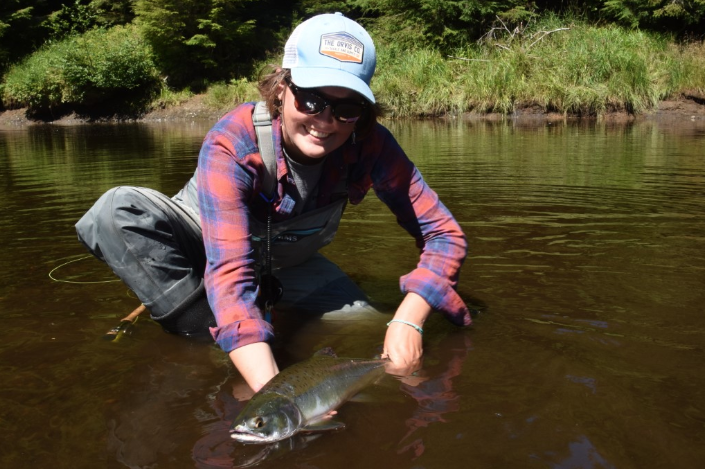The Tongass National Forest is the largest national forest in the United States and is home to the third largest island in the United States, Prince of Wales (only Kodiak and the big island of Hawaii are bigger).
The 5 Rivers Odyssey crew spent 10 days on Prince of Wales to learn more about issues affecting the salmon that spawn in the island’s streams and rivers. Because of its size, the Tongass has various opportunities for both recreation and industry. While both national parks and national forests can be utilized and enjoyed by the public, they differ in how they can be used. National parks are managed for recreational purposes such as hiking, camping and fishing, whereas national forests are managed for timber production, hunting, fishing grazing, and other uses.
Nearly 70 percent of Alaska’s land is public land, providing endless opportunities for outdoor enthusiasts to see their fair share of wilderness. Hunters and anglers come to the Tongass to experience the pristine wilderness accented by old-growth forests, lively rivers and towering mountains.
The Tongass is known as “the Salmon Forest” for reasons that became obvious to us as soon as we arrived on Prince of Wales. Wild salmon bring the nutrients from the open ocean back to the Tongass’ streams and rivers, creating a unique ecosystem of spruce, hemlock, and cedar trees, among other organisms. When bears feed on salmon carcasses, they fertilize the forest floor, promoting the growth of shrubs and plants that feed the forest’s strong population of blacktail deer. Blacktail deer are then consumed by the forest’s black bears and wolves.
While the landscapes that we have seen in the Tongass are entirely different from any other part of Alaska that we have visited, they are just as enticing. The Tongass has something for everyone to enjoy, and its abundant fish and wildlife populations support strong hunting, commercial and sport-fishing industries.
To ensure that future generations can continue to enjoy and utilize national parks and national forests, we need to be aware of how our public lands are being managed. Salmon are a crucial resource in the Tongass, and their survival depends on our ability to protect and conserve their habitat.



